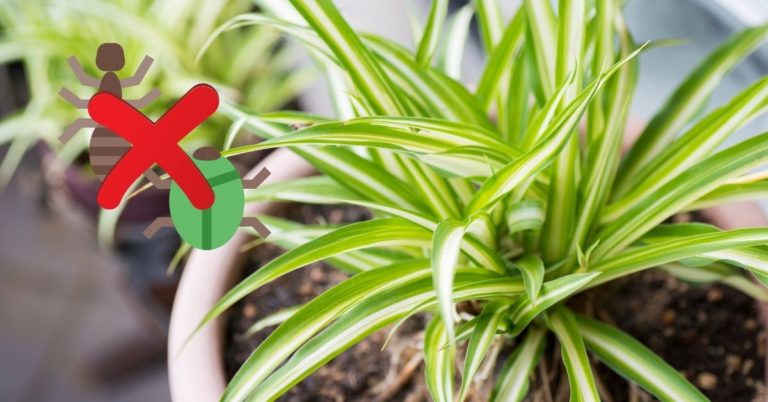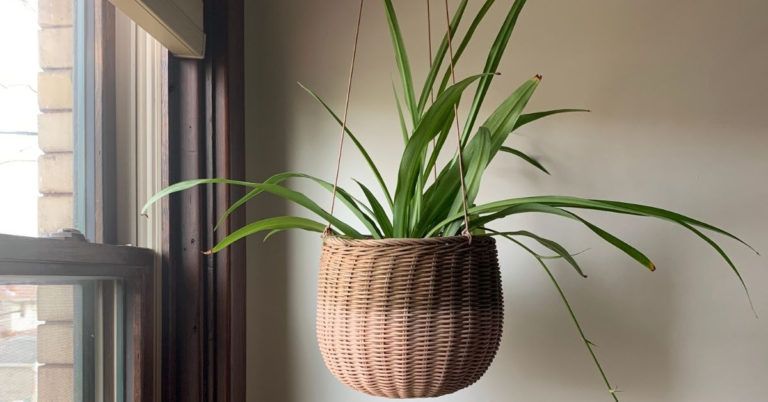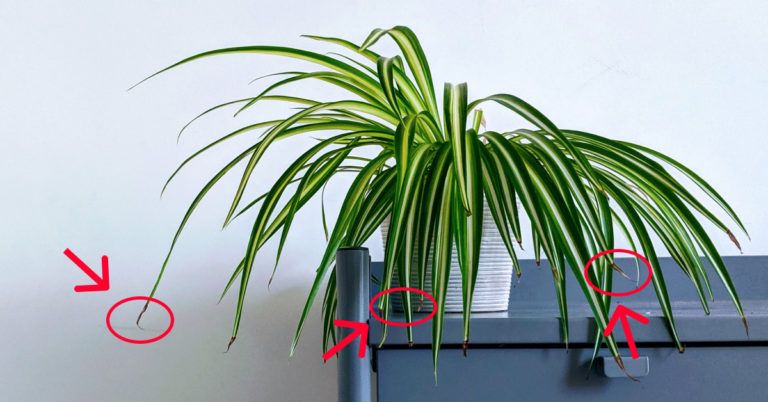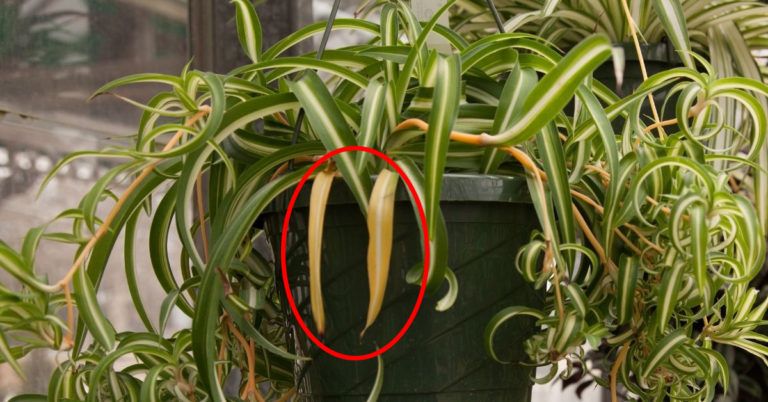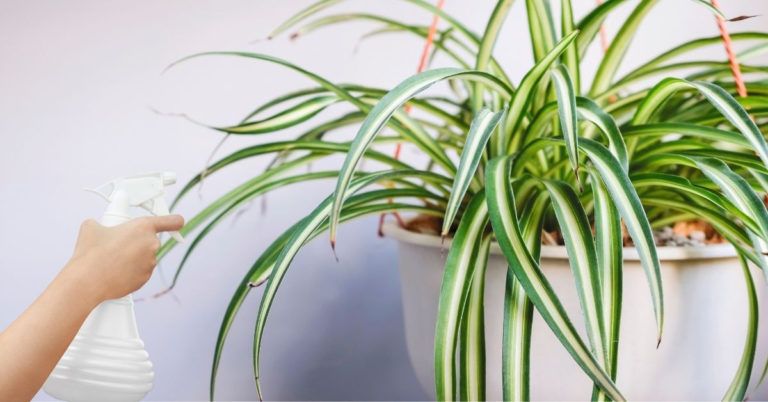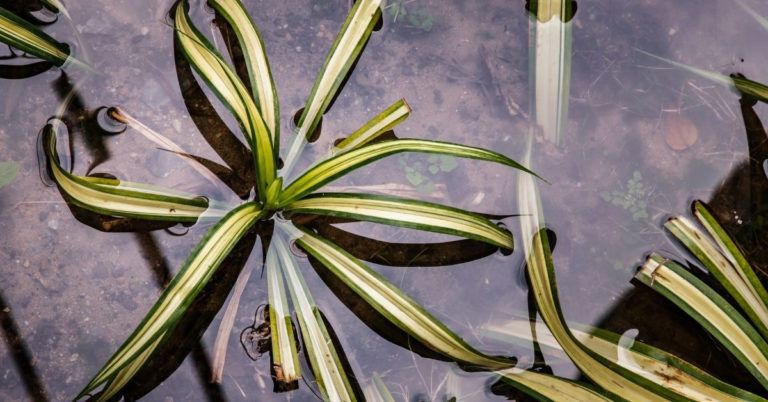Beginner Spider Plant Care: How to Care for a Spider Plant
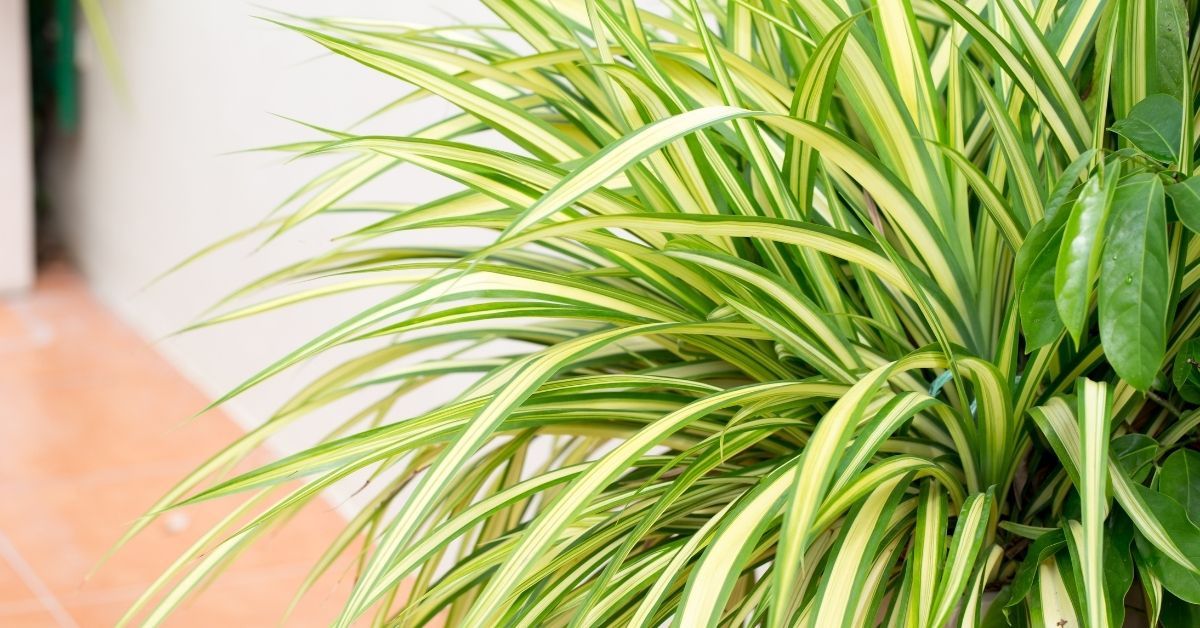
This is our spider plant care guide to help you take care of your new houseplants.
In this spider plant care tips, you’ll learn:
- How to take care of a spider plant?
- What are the spider plant varieties?
- How to propagate a spider plant?
- Pests and diseases to look out for.
- and much more…
So if you want to learn how to make your spider plant happy and healthy, this guide is for you.
Let’s get started.
About the Spider Plant

The Spider Plant (Chlorophytum Comosum) is a wonderful houseplant that makes a great indoor or outdoor plant.
It is extremely easy to grow, and is extremely adaptable to many different conditions.
It can be grown in a small pot or on a larger patio or deck, and is very forgiving when it comes to water, light and soil.
Spider plants are known for their graceful, arching leaves, which give them a very unique look. When they reach a certain age, they will also grow small white flowers.
They are also known for their ability to absorb air pollutants and are very effective at purifying the air of dust and other airborne pollutants.
Other than that, spider plants also have numerous benefits for your home. For instance, spider plants can improve your indoor air quality, help reduce stress, and boost your productivity.
Also known as the “airplane plant” and “spider ivy” because of their leaf shape, spider plants are native to South Africa.
In any case, they will make a great addition to any home, office or garden.
Also read: Houseplant Care Guide: Everything You Need to Know to Take Care of A Houseplant
Varieties of Spider Plant
Spider plants are found in a plethora of colors, sizes, and forms. This makes it simple to choose a plant that complements your personal taste.
Here are two of the most common varieties of spider plant you might see when shopping for one:
- Variegated Spider Plant (Chlorophytum comosum ‘Vittatum’) : The Vittatum spider plant is the most popular and widely available spider plant you can find. This variety will most likely be found at your local nursery or garden center. Medium green leaves with yellow vertical stripes in the middle are the key characteristics of this particular variety.
- Variegatum Spider Plant (Chlorophytum comosum ‘Variegatum’) : This Variegatum is another a very popular spider plant and can be found in local nurseries. The variegatum spider plant is also known as the reverse variegated spider plant. The leaves have bright yellow borders with wide green stripes in the middle of them.
According to some estimates, there are more than 200 different types of spider plants available, each with its own distinctive characteristics.
If you want to learn more about different types of spider plants, check out the further reading section below.
Further reading: 8 Different Types of Spider Plants You Should Know (With Pictures)
How to Grow and Care for a Spider Plant?
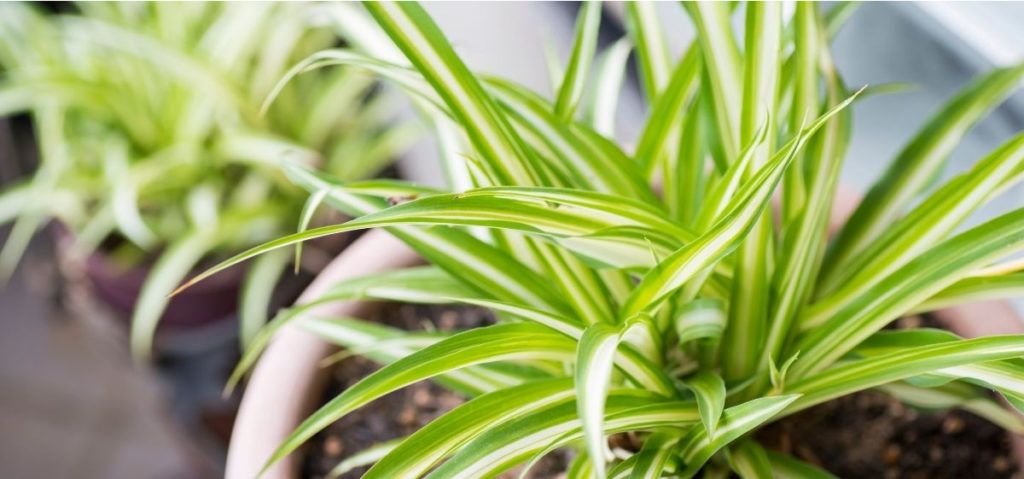
First of all, spider plants are pretty easy to take care of. They’re low maintenance plants, and they’re pretty small, so they don’t take up much space.
Despite that, many people struggle in keeping their spider plants alive.
We all know how difficult it can be to keep a plant happy and healthy!
You might feel like giving up on your new houseplant after you’ve put in the time and effort into taking care of them, but not with our Spider Plant Care Guide.
With these helpful tips, we hope your spider plant stays healthy and happy for years to come!
Light
Spider plants are easy to grow and care for. The plant can tolerate lower light conditions, so it is ideal for indirect lighting.
It is important to keep plants away from direct sunlight as the leaves will scorch and die.
To avoid direct sunlight, try to grow the plant in a part of your home with indirect light.
If you are growing indoors or outdoors, make sure there is some shade for the leaves as well.
Further reading: Do Spider Plants Need Sun? (Explained)
Water
Spider plants are a type of succulent plant. They require very little water and use up to 20% less water than most other types of plants in their care.
Generally, you should water your spider plant once a week. You should allow the top 50% of soil to be dry before watering your spider plant, and you can also use filtered water if needed.
Browning leaf tips in your spider plant is caused by chemicals in the tap water that they drink from, so make sure that you’re using distilled or purified water for it’s consumption.
Read our in-depth guide about watering your spider plant to find more great tips about watering your plant.
Soil
Spider plants are known for their long, thin leaves that can reach up to two feet in length.
These plants prefer a neutral soil pH and will grow well in somewhat acidic or alkaline soil.
Too much salt in the soil can cause brown patches on the plant’s leaves which may look like mold.
Temperature and Humidity
Spider plants can tolerate a wide range of temperatures, but they do best at temperatures between 50 and 85 degrees Fahrenheit.
If your spider plant is kept at temperatures below 50 degrees, you’ll notice that the leaves will start to yellow and dry out. The plant may also lose its green color.
Spider plants also prefer high humidity levels. If your spider plant is kept in an environment with low humidity, the plant’s leaves will become brown and curled up.
Also read: Can A Spider Plant Live Outside? (Explained for Beginners!)
Fertilizer
Spider plants don’t require much fertilizer. In fact, they’re pretty easy to care for, and they don’t need to be fertilized during the growing season.
If you want to feed your spider plant, you should use a slow-release fertilizer.
This type of fertilizer releases nutrients gradually over a long period of time, so it’s not necessary to fertilize your spider plant every week.
You can also use a regular all-purpose fertilizer for your spider plant.
Spider Plant Pests and Issues to Watch Out for
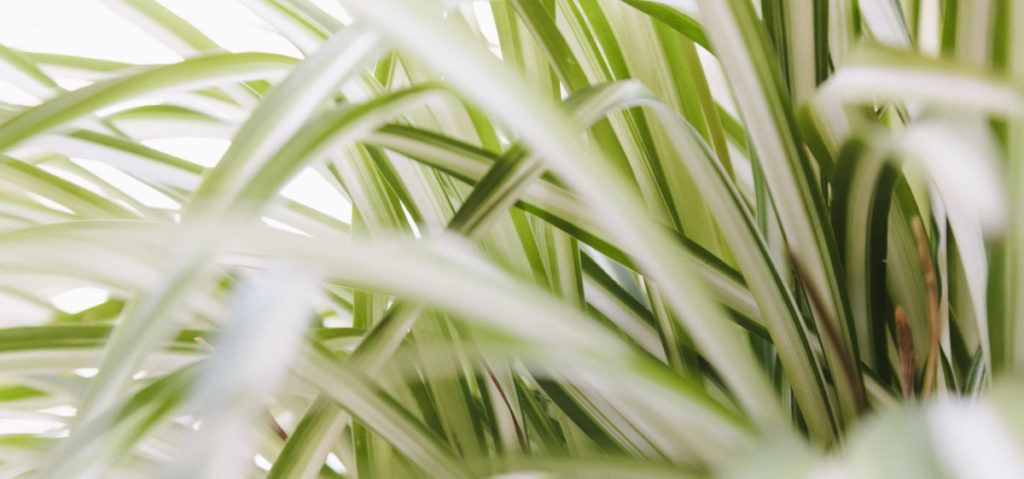
Although spider plants are relatively easy to care for, there are still some pests and diseases that you should be aware of when taking care of your spider plants.
Here are some common spider plant pests and diseases that you need to watch out for.
Further reading: Why is My Spider Plant Dying? (7 Possible Causes and Fixes)
Spider Mites
Spider plants are pretty pest-free, but they do have a few pests that can cause problems.
Red spider mites are a common pest that can cause damage to the leaves and stems.
They look like tiny bugs with long legs. You can get rid of these pests by spraying the plants with a mixture of water and insecticidal soap.
Spider mites can also be a problem if your spider plant is growing in an area with direct sunlight.
The pests thrive in warm temperatures and will multiply quickly.
If you find spider mites on your spider plant, remove them by hand or by using a soft brush.
Simply rinsing the plant with water is also a natural and efficient approach to treat certain pests.
For more significant infestations, a pesticide can be applied. You can our guide to help you get rid of spider mites from your spider plants.
Related: Do spider plants attract spider?
Brown Tips on Spider Plant’s Leaves
If you notice that your spider plant’s leaves have brown tips, this is most likely due to the plant being kept in a place that is too dry and hot. The brown tips may also be caused by over-watering.
While your spider plant can withstand some heat, the leaf tips may become brown.
Cut the brown tips off your plant and transfer it to a cooler place to remedy this problem.
Then, remember to feed it and water it on a regular basis.
To learn more, read our blog post to find out the common causes that make spider plant leaves turn brown here.
Brown, Large Streaks on Spider Plant’s Leaves
If you observe dark, brown streaks on your spider plant’s leaves, it’s possible that this is due to overwatering in a cool and frigid environment.
This usually happens during the winter months.
To fix this problem, trim any unsightly leaves and make sure your spider plant receives less water during the cooler months. Your spider plant’s soil should be slightly wet.
Your spider plant should also be brought inside because it will not withstand freezing temperatures.
Also read: Can Spider Plants Survive a Freeze? (Answered)
Spider Plant has Yellow Leaves
Your spider plants’ leaves have a tendency to yellow when they get too much water.
If you notice that your spider plant’s leaves turn yellow, it’s possible that your spider plant’s roots are too wet.
To address this issue, first you want to trim any yellow leaves.
Next, you want to regularly water your spider plant.
Lastly, you also want to check for root rot symptoms, as yellow leaves can also be caused by this.
Further reading: Why is My Spider Plant Turning Yellow? (Causes and Fixes)
Spider Plants and Pets
First, the good news: Spider plants are not toxic to pets, and they won’t harm their health or cause any allergic reactions.
According to the American Society for the Prevention of Cruelty to Animals (ASPCA), spider plants are safe for cats, dogs, and other animals.
The bad news: They are still plants, and your pets can easily destroy and kill your little plant.
Therefore, if you have an aggressive pet, you may want to consider keeping them away from your spider plants.
You might want to hang the spider plant or place it in a different location that is out of reach.
Finally, if you’re interested in learning more about spider plants and whether or not they’re toxic to your pets, you might check out these additional resources:
How to Pot and Repot Your Spider Plant
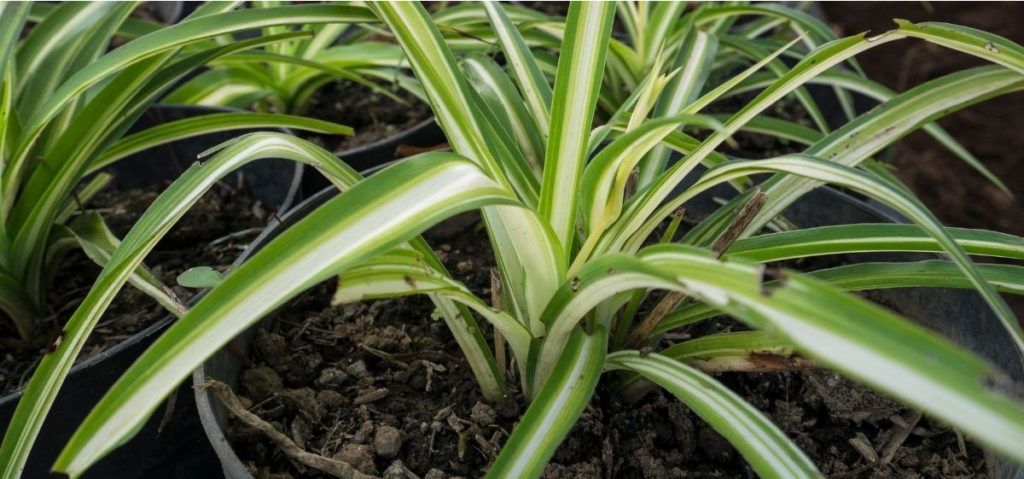
When it comes to repotting your spider plant, there are some things that you need to keep in mind.
First of all, you don’t want to overpot your spider plant.
This is because the soil will get compacted and the roots will become constricted.
The soil in your spider plant’s pot should be slightly damp, but not completely wet.
You also don’t want the soil in your spider plant’s container to be too loose or it will dry out.
You should repot your spider plants when the roots begin to grow out of the pot’s drainage holes.
Whenever the white, fleshy roots begin to push the plant out of its container and make watering difficult, repot the mature plants.
Spring is a good time to repot little spider plants into a larger container.
When spider plants reach maturity, they produce “plantlets” or “babies” that may be separated and cultivated separately.
Even if they have just a few roots, you may plant them immediately in a fresh soil mix.
Put them in water for a few weeks if they don’t have any roots yet, and they will eventually develop them.
Final Words
I hope you learn something new about your spider plant and find a way to care for it.
Spider plants are also very easy to care for and they won’t need much maintenance.
If you have any questions about taking care of your spider plants, feel free to contact us.
We will be happy to help!
If you found this article helpful, share it with your friends and family.
Thank you for reading!
FAQs about Spider Plant Indoor Care
Are spider plants OK in the sun?
Spider plants do not need direct sunlight to thrive. It is best to avoid this type of light as it will scorch the leaves and damage them in a way that they won’t grow back, leading the plant into death.
Do spider plants do OK in low light?
Spider plants are a type of plant that is known for its unique shape with long thin leaves. They do well with low light, so they can grow in many indoor spaces.
Why are the tips of my spider plant leaves turning brown?
Spider plant leaves turning brown could be because of the central heating or due to underfeeding and underwatering. If you find your spider plant’s leaves are turning brown, try providing it with more water and feeding it regularly.
